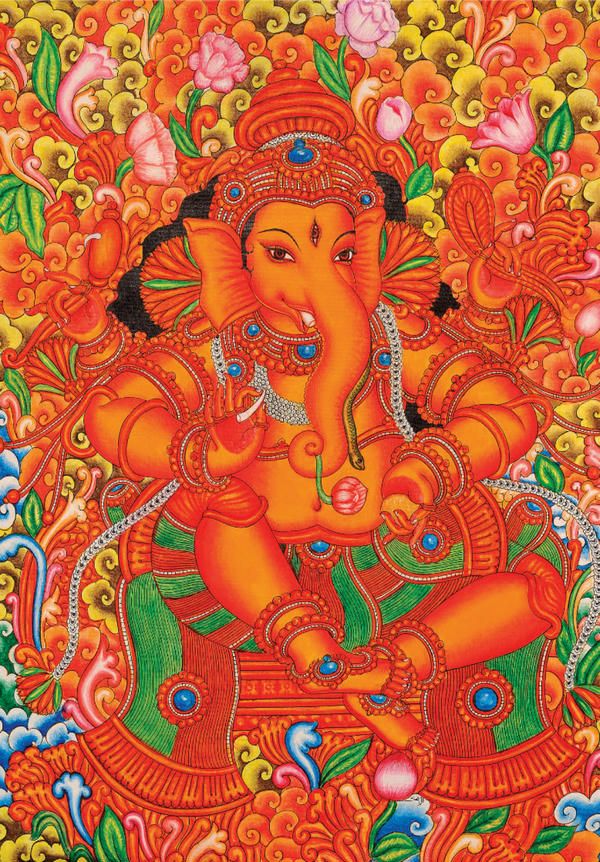Master of the Word

IN THE PRIMORDIAL THROB, ADYA SPANDA, THE Tantra says, inhere a series of vibrations that take the form of sound, nada. This is the word, the Word Eternal, Nityavak of the Veda, which itself became all the worlds. Vak descends for the purpose of creation, with Her four cosmic steps. The Veda says that all speech is measured out in four steps or planes, impelled by the mind, and these are known to the knowers of Brahman. The first three are cryptic, hidden in secrecy, while the fourth step is human speech, that is, the ordinary word.
These four steps, or aspects, are: sthula, the physical substance of matter; sukshma, the vital life force supporting and circumferencing it; karana, the causal, the mind principle; and mahakarana, the great causal, the high Supernal, where abides the Word with all the original rhythm. And these again correspond to the four states of consciousness: jagrat, the waking state; svapna, the dream state; sushupti, deep sleep; and turiya, the fourth condition, that which is beyond these three.
The tantrikas, while admitting the principle of the division, apply it for practical purposes, dealing with the subject from a psycho-physical and psycho-spiritual point of view. Naturally, therefore, since the subtle centers play a vital part in their yoga, they locate the vak of the states in the nervous system. They name it para, pasyanti, madhyama and vaikhari. The first and the supreme force — the primordial para-vak — is beyond the ordinary reality. It is unmanifest but turned towards manifestation. It is the great causal mahakarana, and as such its center is at the base of the spinal column that supports the nervous system. This bottom is muladhara, the root center of the physical being. Next is pasyanti vak, the word that perceives; and this is the causal, located in the navel center. Then is madhyama vak, the middle, the word in the intermediate, subtle region between the navel and the throat, which is the region for the expression of speech, called vaikhari vak. Ganapati as Brahmanaspati is the Master of the Word, the Lord of Satya Mantra. And so, the Tantra conceives Him as having His abode in the muladhara of beings, from where speech originates in the form of paravak.
Seat of Muladhara
It is said in the Veda that Brahmanaspati descends deep down into the inconscient waters to bring about in creation something stable and solid. In the macrocosm, His whole process of creation starts from the bottom. His action applies equally to the microcosm. In the microcosm, in the human being, there are different planes and parts of being which are governed by conscious centers and sources of the dynamic powers of the being, which again act as focal points for the consciousness to operate. These centers, picturesquely described as chakras (wheels of power), or padmas (lotuses) ready to unfold, are situated in the subtle body and are arranged one above the other in an ascending series from the lowest physical to the highest mind center and spiritual center. The lowest physical is represented by the bottom-most center, muladhara, and Ganapati operates from there as the unmanifest word.
There is an ancient Tamil classic known as Vinayaka Ahaval, attributed to Auvaiyar, which is in praise of Ganapati. Fittingly, it starts with the words sitak kalabhach chentamarippum padachilambu pala isai pada, which means, superficially, “the various notes raised by the anklets adorning the lotus feet of the Lord, which are as cool as sandalpaste.” The cool sandal gandha is the measure, tanmatra, of the earth element, prithivi tattva, and sentamarai is the red lotus. Obviously, the muladhara center is indicated, which is known as the kulam, where the earth element, the lowest physical, abides. Similarly, by padachilambu is indicated the quarter of speech, paravak. At the outset of itself, the ancient Tamil classic praises Ganapati as the form of paravak, having his abode in muladhara.
In the muladhara is the potential energy picturesquely represented as the sleeping serpent power kundalini shakti. There is a fire there, which in its gross form is jatharagni, the physical fire, the fire that cooks all food, digests it and transforms it to sustain the physical organism. The other form is vaishvanara, the soul in the heart of every being, the jiva, the Self, the Skanda of the Puranas. Still another form is the vaidyuta, electric energy, from which speech arises, thereby representing Ganapati. When Ganapati becomes active in the muladhara, when His grace is felt, the kundalini shakti wakes up, the fire shoots up its flames, opening the centre at the summit and filling the whole system with a downpour of nectar-like bliss. Then one is able to realize the Godhead in the mantra and know the sign of the Lord in the conscious mind — Sattattil sadashivam katti, cittattil Sivalingam katti, as the Tamil classic says.
Powers and Personalities
Many are the powers and personalities of Ganapati. The universe is created in the form of groups (ganas), and for each gana there is a Ganapati, collective head. Thus, there are innumerable Gananathas and Vinayakas. At least in the Mahashodha Nyasa, in the Shakta Tantra, there are as many Ganeshas as there are matrikaksharas, letters of the alphabet, that is, 51. Ganapati in the form of an infant, Bala, indicates possibilities of growth and future unfoldment for the aspirant. Ganapati as a dancer points to dynamic, harmonious activity geared towards progress.
**Credits to and published by Himalayan Academy

